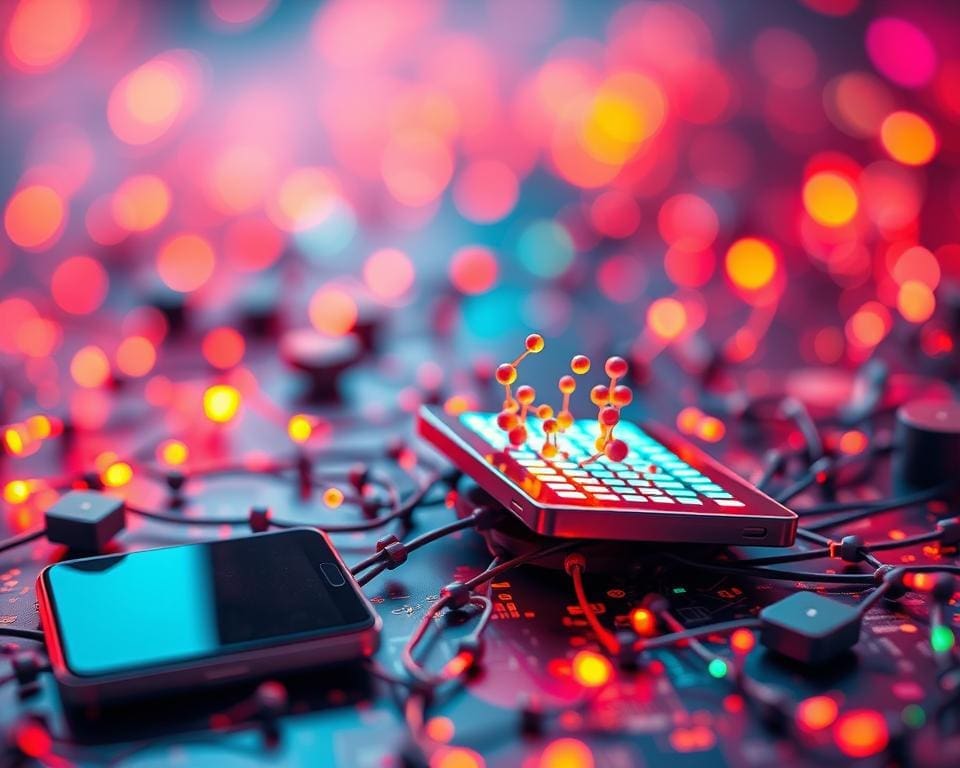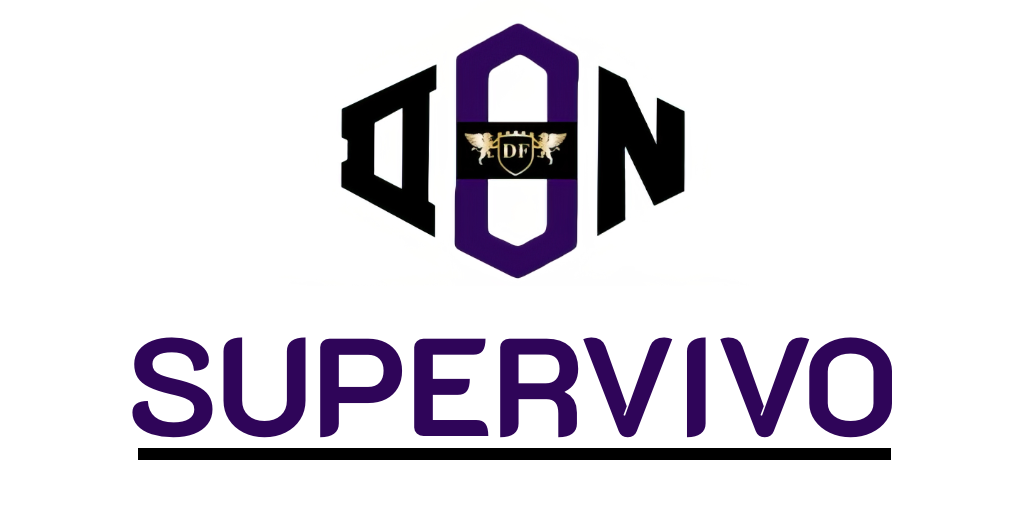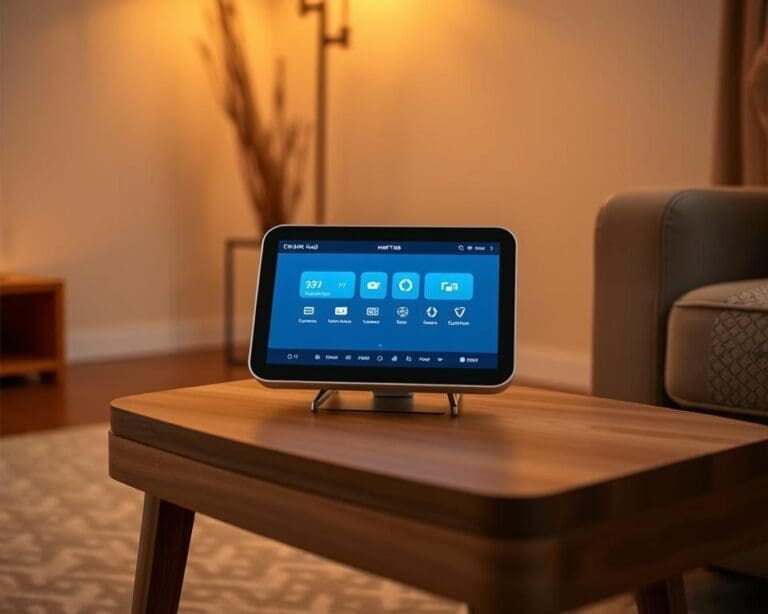As we stand on the brink of a technological revolution, nanotech emerges as a powerful force, transforming our everyday gadgets into incredible tools of innovation. Defined as the manipulation of matter at a nanoscale, typically less than 100 nanometres, this cutting-edge technology is set to redefine gadget technology for consumers.
The potential of nanotechnology lies in its capacity to enhance performance, making devices lighter, more efficient, and remarkably smarter. Imagine smartphones that last longer, wearables that monitor health in real-time, and appliances that adapt to our habits. These advancements are just the beginning, as future tech continues to unfold in unexpected ways.
The Basics of Nanotechnology
Understanding the basics of nanotech involves delving into a realm where science meets engineering, influencing many sectors. This fascinating area of study manipulates materials at a scale that challenges traditional perceptions, focusing on atoms and molecules. The question arises, what is nanotechnology? It is a multidisciplinary field dedicated to the design, production, and application of structures, devices, and systems by controlling shape and size at the nanoscale—often at sizes that range from 1 to 100 nanometres.
What is Nanotechnology?
Essentially, nanotechnology is about harnessing the unique properties exhibited by materials at this minute scale. At nanoscopic dimensions, materials can reveal remarkable traits, such as increased strength, lighter weight, or enhanced electrical conductivity. These properties enable innovations that change the landscape of various industries, presenting opportunities previously deemed unattainable. The profound potential of this scientific exploration inspires advancements in medicine, electronics, and renewable energy.
Historical Context of Nanotech
The historical context of nanotechnology traces its roots back to pivotal moments in scientific discourse. A crucial milestone was Richard Feynman’s 1959 lecture titled “There’s Plenty of Room at the Bottom,” where he envisioned manipulating individual atoms—a concept deemed futuristic at the time. As decades progressed, further developments unfolded through the work of researchers like Eric Drexler, who stressed the implications of molecular manufacturing. By the early 2000s, a distinct shift occurred, as nanotechnology established itself as a rigorous scientific discipline, marked by significant breakthroughs and an ever-evolving landscape of techniques. This trajectory illustrates the evolution of technology, showcasing how far humanity has come in understanding and utilising the nanoscale.

Nanotech: Transforming Our Everyday Gadgets
Nanotechnology is revolutionising the landscape of consumer electronics, offering innovative solutions that redefine how we interact with everyday gadgets. This advanced technology not only enhances functionalities but also contributes significantly to the overall user experience.
How Nanotechnology Integrates into Consumer Electronics
Applications of nanotechnology in consumer electronics are extensive and varied. From the development of improved batteries that last longer and charge faster, to advanced display technologies such as OLED that deliver stunning visuals, the integration of these microscopic advancements is undeniable. Furthermore, nano-coatings enhance the durability and water resistance of devices, ensuring that they withstand the rigours of daily life.
Impact on Device Performance and Efficiency
The impact of nanotechnology on performance efficiency is profound. By enabling faster processing speeds and optimising power usage, devices become more responsive and dependable. The incorporation of lightweight yet robust materials contributes to reduced weight without sacrificing strength, enhancing the portability of gadgets. Users experience extended battery life, streamlined operations, and overall improved functionality, making these innovations essential in today’s tech-driven world.
Revolutionary Nanomaterials in Gadgets
The integration of nanomaterials in technology is transforming the gadget industry into an innovative realm. Various types of nanomaterials, such as carbon nanotubes, graphene, and quantum dots, play a crucial role in enhancing the performance of modern devices. Each material brings distinct advantages, contributing to the advancement of gadget technology.
Types of Nanomaterials Used in Modern Gadgets
Among the most prominent types of nanomaterials are:
- Carbon Nanotubes: Known for their extraordinary strength and excellent electrical conductivity, carbon nanotubes are indispensable in developing advanced gadget materials.
- Graphene: This remarkable substance showcases unparalleled thermal efficiency and flexibility, making it a key player in the design of next-generation electronics.
- Quantum Dots: These nanoparticles offer unique optical properties, enhancing displays and enabling vibrant colours in screens.
Benefits of Incorporating Nanomaterials in Technology
The benefits of nanotechnology are profound and multifaceted. Incorporating nanomaterials into devices leads to:
- Enhanced performance, allowing gadgets to operate more efficiently.
- Increased longevity of devices, reducing the need for frequent replacements.
- A smaller environmental footprint, as these materials often require less volume compared to traditional materials.
Smart Devices of the Future
The landscape of technology is evolving dramatically, with smart devices leading the charge in advanced functionalities and user-centric design. Numerous current innovations showcase the power of nanotechnology, enhancing performance and efficiency. These iterations illustrate how innovation can seamlessly integrate with our everyday lives.
Examples of Current Innovations Featuring Nanotech
Smartwatches, alongside advanced smartphones, exemplify the significant impact of nanotechnology in creating compact and powerful devices. With features such as:
- Health monitoring capabilities that utilise nanosensors,
- Advanced battery technologies allowing for longer use without charging,
- Enhanced display technology for richer colours and sharper images.
The incorporation of nanotechnology into these devices not only improves user experience but also establishes a new benchmark for what consumers expect from their smart devices.
The Role of Nanotech in IoT and Smart Home Devices
As the Internet of Things (IoT) expands, nanotechnology plays a pivotal role in creating interconnected environments. Smart home devices now leverage nanotechnology to facilitate:
- Efficient energy management systems that optimise power consumption,
- Enhanced security features that adapt to user settings,
- Seamless connectivity between devices for intuitive automation.
This synergy between future tech and nanotechnology in IoT not only enhances convenience but transforms how consumers interact with their surroundings, making homes more responsive and intelligent.
The Digital Revolution and Nanotechnology
In the realm of technology, the digital revolution marks a significant turning point characterised by remarkable advancements. A key player in this transformation is nanotechnology, which facilitates breakthroughs primarily in advanced computing. As devices become increasingly interconnected, the applications of nanotech are set to thrive, paving the way for a revolutionary future.
How Nanotech Facilitates Advanced Computing
Nanoscale transistors exemplify how nanotechnology enhances computing power and efficiency. These miniature components allow for the creation of microprocessors that are both more compact and powerful. As a result, we witness devices performing operations at speeds previously deemed unattainable. This ongoing evolution signifies a leap forward in the capabilities of modern electronics, directly supporting the digital revolution.
The Future of Nanotech in Digital Technologies
Looking ahead, the future of nanotechnology appears promising in the landscape of digital technologies. Continued tech innovations hint at an era of smaller, faster, and more efficient devices. Potential applications extend beyond traditional computing. Quantum computing and artificial intelligence stand on the horizon, ready to harness the benefits of nanotech integration. As this field evolves, it heralds an exciting chapter in the digital revolution.
Environmental and Health Impacts of Nanotechnology
The integration of nanotechnology into everyday gadgets heralds a new era of innovative solutions, yet it also brings forth critical considerations surrounding its environmental impact. The production, application, and disposal of nanomaterials can pose challenges to ecosystems. While enhanced efficiency and material savings are considerable advantages, the implications of releasing nanomaterials into the environment have sparked concerns among experts. Balancing technological advancement with ecological preservation is essential for sustainable tech solutions.
Moreover, the health impacts of nanotechnology require careful scrutiny. Exposure to nanomaterials during manufacturing processes or through consumer use raises questions about their long-term safety. Issues such as toxicity can arise, emphasizing the need for robust research and regulatory frameworks to protect both workers and consumers alike. Responsible innovation must be at the forefront of this burgeoning field, ensuring that ethical practices are maintained throughout the lifecycle of nanotechnology products.
As we progress into a future increasingly influenced by nanotech, embracing environmentally sound practices becomes paramount. This involves not only implementing stringent safety regulations but also fostering an awareness of sustainable tech solutions. By prioritising health and environmental safeguards, we can unlock the full potential of nanotechnology while safeguarding our planet for future generations.









